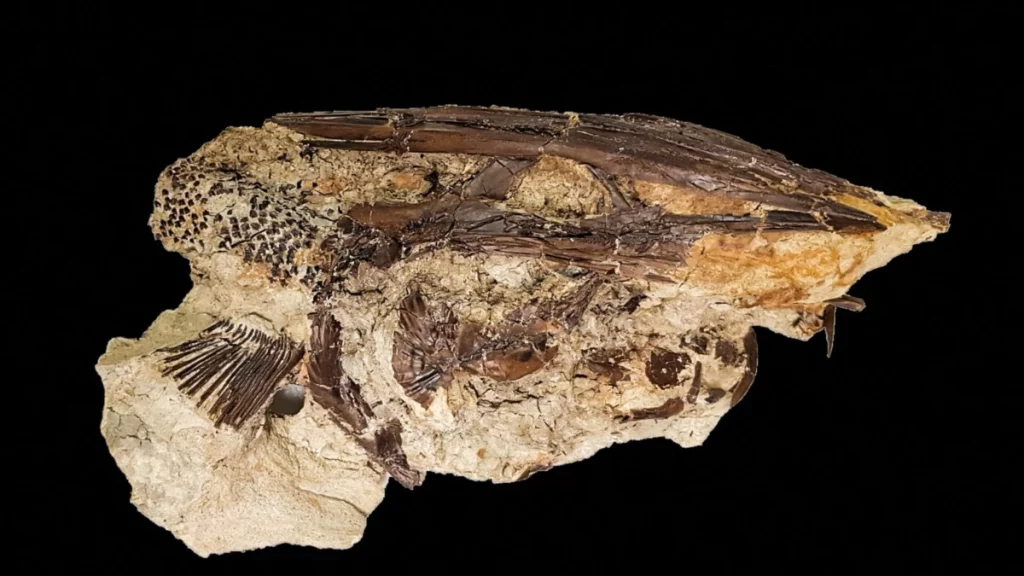
Scientists recently said that fish fossils In the US state of North Dakota, they offer a deeper understanding of one of the worst days in the history of life on Earth.
On a spring day 66 million years ago, it appeared that asteroid It struck 12 km in the Mexican Yucatan Peninsula, resulting in extinction that killed about three-quarters of the planet Ocean, including dinosaurs. This event paved the way for mammals – eventually including humans – to become dominant.
The researchers determined that it was spring in the northern hemisphere at the fossil site called the Tanis deposits when the asteroid impacted.
They based their study on the bones of three paddle fish that died within about 30 minutes of Effect It happened 3,500 kilometers away.
The researchers found evidence of a dissolved substance in the gills – the part of the body that fish use to breathe. The fossils of Tanis also indicated the presence of a large wave of water that buried alive local creatures.
“Everything alive in Tanis on that day came to nothing and was killed almost instantly,” said Melanie Dharan of Uppsala University in Sweden. She is the lead author of the research published in nature.
And while comparing the excavations at Tanis to “a car accident frozen in place”.
Several types of evidence have pointed to the effect of springtime.
Annual growth rings in some fish bones – such as those in tree trunks – showed increased levels of growth in the spring after growth decreased in the winter months.
Chemical evidence from a paddlefish indicates that food availability is increasing, as is the case in spring.
Spring is a time for growth and reproduction for many organisms.
“This season Important “For the survival of the species,” said study co-author Sophie Sanchez of Uppsala University.
Sanchez noted that in the Southern Hemisphere, it was autumn at the time, the season when many creatures prepare for winter.
Dinosaurs – apart from their avian relatives – became extinct, as were major marine groups, including carnivorous reptiles that dominated the seas. Among the survivors were paddle fish and sturgeon, which have survived to this day.
The Tanis fossils helped researchers better understand the events following the impact, which left a crater about 180 kilometers wide.
The asteroid triggered earthquakes, wildfires, and very large waves.
These waves, carrying large amounts of dirt and other materials, hit the Tanis site within about 15 to 30 minutes after the impact, burying all the animals alive, including the fish whose fossils were studied.
The dangers continued after that day. A cloud of dust covered the earth, causing a climatic catastrophe that blocked sunlight for years.
“It was the exact timing of the impact that determined the course of the mass extinction,” said study co-author Jeroen van der Loeb of Vrije Universiteit Amsterdam in the Netherlands.
I’m John Russell.
Will Dunham reported this story to Reuters. John Russell adapted it for learning English.
________________________________________________________________
The words in this story
fossil – n. Something (such as a leaf, skeleton, or footprint) of a plant or animal that lived in ancient times and can be seen in some rocks
asteroid – n. Small rocky bodies that revolve around the sun
extinction – n. The condition or situation that results when something (such as a plant or animal species) dies completely
Ocean – n. Biology: a group of animals or plants that are similar and can produce small animals or plants: a group of related animals or plants that are smaller than the genus.
dominant More important, powerful, or successful than most or all of the others
Effect – n. The action or force of one thing that strikes another
Important – very important




More Stories
Boeing May Not Be Able to Operate Starliner Before Space Station Is Destroyed
Prehistoric sea cow eaten by crocodile and shark, fossils say
UNC student to become youngest woman to cross space on Blue Origin